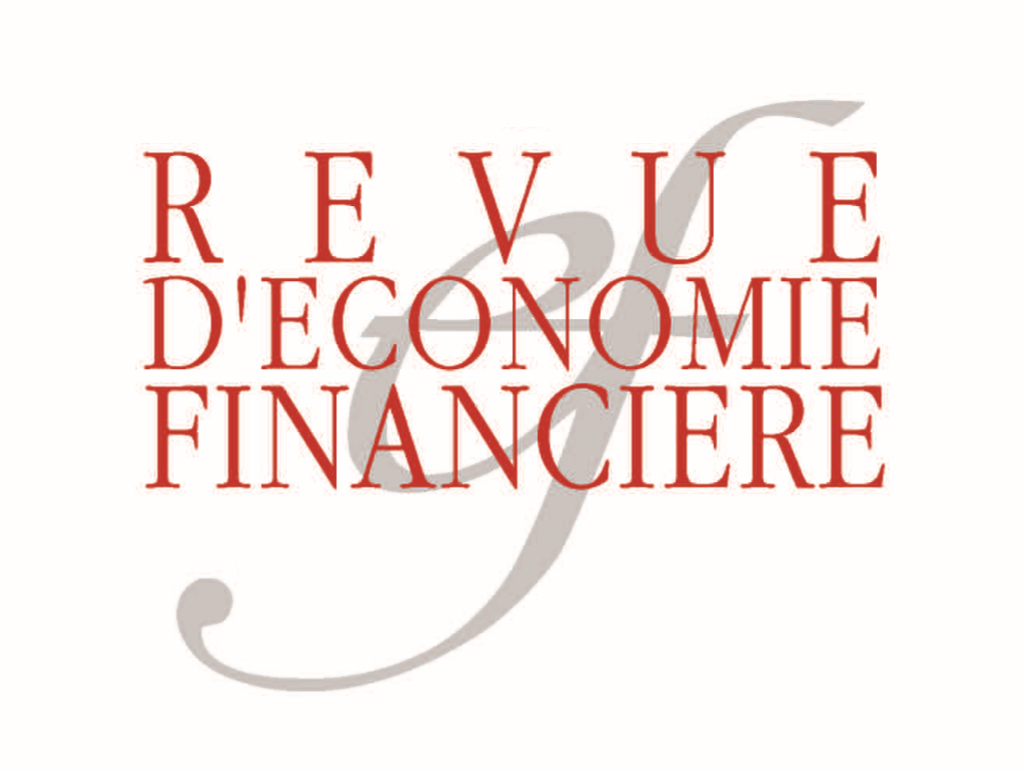The longer the pandemic lasts, the more governments need to support the economy, and rightly so, particularly companies in the most affected sectors and the households that depend on them, and the more central banks need to support governments by buying their additional debt. As a consequence of this, debt is strongly increasing. Post-Covid, the question is how this sharp spike in debt will be managed, coming as it does after a period of rising debt globally for at least the last two decades. This is how the ‘debt trap’ is built. Either central banks will gradually exit their quantitative easing policy and long interest rates will rise again, potentially causing the insolvency of a number of companies and States, if they have not returned to a credible debt trajectory before. Or they will not do it and it will exacerbate the financial and real estate bubbles already present with soon or later their bust and their disastrous economic and social consequences. And, ultimately, a possible loss of confidence in money. What policies can we then pursue to best avoid this trap?
There are wrong paths and others to consider, as no solution is obvious or easy.
FIRST WRONG PATH
First wrong pathis the one defended by a number of economists who say that, fundamentally, debt can be limitless because interest rates are close to zero. More specifically, with nominal interest rates below nominal growth rates, debt sustainability would be assured. Thus, de facto, debt levels would ultimately have little importance. But the underlying model, which is well known, is only true under certain conditions.
FOUR REASONS WHY THIS MODEL SHOULD BE CALLED INTO DOUBT:
First, this situation of interest rates persistently lower than growth rates almost inevitably generates financial cycles, that is bubbles on assets (particularly equities and real estate, but also gold, art, etc.), with an excessively strong and under-rewarded trend towards over-indebtedness and risk-taking among investors (households and asset managers). Ultimately, this leads to greater vulnerability in both borrowers’ liabilities and investors’ assets. Major financial crises arise sooner or later, with now well-known economic and social consequences. In addition, these crises reduce potential growth over the long term. These issues are now well documented, so we will not make the case for this point here, as it is clearly explained elsewhere. Finally, we should add that macroprudential policies, however essential they are, remain wholly insufficient to counter financial cycles. On the one hand, because they remain national and it is difficult for authorities to act against the competitiveness of the banks in their own country, on the other, above all because they only affect banks at this time, while the relative weight of financial markets in the national and international financing system has been rising sharply over the last few decades.
Secondly, notwithstanding the financial crises caused, excessively low rates for too long are themselves weighing on growth trends. This is not always well understood. In the usual model, the natural interest rate, calculated on the basis of determinants that are real variables, has been getting ever lower for several decades. It has even been very low in recent years, or even below zero in the eurozone. The extremely low or even negative natural rate could be a sign that savings are above ex-ante investments and inflation is too low, below its target. This would therefore justify taking effective rates ever lower to drive savings down and investment up, and raising the inflation rate at the same time. However, perhaps there is an anomaly in this reasoning. This idea, while partly true, is also partly mistaken, because the monetary regime, that is the monetary policy that unfolds over the long term, also in reality influences the economy and growth over the long term.
Thus, if interest rates are below growth rates for too long, monetary policy affects the real economy by the resulting misallocation of capital. Some companies in fact stay alive, while if interest rates had been close to the growth rate, they would have continually shown a loss and would have actually disappeared (these companies are called “zombies”). They stay alive, distort capital allocation, disrupt the health of healthy and competitive companies, and prevent the natural phenomenon of destruction/creation necessary for any economic dynamism in developed countries. This is one of the reasons behind the decline in productivity gains. Moreover, excessively low interest rates for too long also facilitate debt. It is much easier to borrow when the interest rate is continually below the growth rate. And over-indebtedness inevitably leads to a decline in investment, which again has a negative impact on productivity gains.
To continue our demonstration, consider the traditional model according to which lower interest rates lead to lower savings and higher investment, which holds true in normal times. In reality, if interest rates are below the growth rate for too long and close to zero, this sooner or later leads to an increase in savings. We should accept that money illusion can play a role in this. We have seen this recently (even before the pandemic), with households accumulating much more savings to offset the lack of interest received, in order to reach the capital they deem necessary for their retirement despite everything. We should add that persistently low interest rates for a long time also weigh on company expectations. Under this scenario, we are likely to see very low nominal growth in the future, which does little to encourage an entrepreneurial spirit. Moreover, zero or negative interest rates muddle all economic calculations.
Finally, if interest rates are excessively low for too long, this creates bubbles, leading to wealth inequalities that, in addition to the resulting social consequences, may have a negative impact on consumption. It is not the households with the highest propensity to consume that generate the most wealth.
For all the reasons set out above, there is therefore a clear trap in keeping rates too low for too long. A non-monetary and non-financial model has to be used to believe that finance and money do not have a significant impact on the real economy. Yet, history has proved the contrary.
In order to avoid deflation and allow the economy to rebound, it is clearly necessary to bring interest rates below growth rates during a major crisis, including through quantitative easing policies when interest rates are already very low, particularly during over-indebtedness crises such as that of 2007-2009. But keeping them very low and below the growth rate, when growth has returned, lending is back at its normal levels, etc., leads to a structural weakening in growth, through the mechanisms described above. And then, it leads in turn to ever lower interest rates.
Finally, note that in the usual model, the Phillips curve indicates that the more employment increases, the more inflation rises. Thus, the same model indicates symmetrically that while inflation remains very low, below its target, the economy is still far from full employment. That is, savings are higher than investment, ex ante. This also indicates that the natural interest rate, a modelled and unobservable variable, is below the effective interest rate, thus pointing to the need to push the latter further downwards. But for years, and up to the current period at least, the Phillips curve has not been working any more, with full employment no longer driving the rise in prices.
This means that taking interest rates ever lower during periods of “normal” growth, in search of a lower natural interest rate, may result from a partially erroneous interpretation. An interpretation that could have a negative impact on the economy, given the effects described above. The question, then, of the inflation target, during this inflation regime, at a level below but close to 2%, would become critical.
We believe that too low inflation is dangerous, as it carries with it a significant probability of falling into deflation, due to the impossibility of making flexible adjustments allowing private agents to react to a recession without triggering massive lay-offs or numerous bankruptcies. Excessively low inflation means it is no longer possible to bring down real interest rates or real wages, factors in less economically and socially painful adjustments. But, if structural inflation remains very low, significantly below 2%, for a long period in the economy, due to the effects of globalisation and the technological revolution, does seeking to raise it at all costs, through a permanently ultra-accommodative monetary policy, not lead to all the very negative effects explained above due to interest rates being below growth rates for too long? We believe central banks must maintain an inflation target, that is to say must have a nominal anchor objective, but the chosen targets must be adapted to the long-term economic and financial regime in force. The monetary policy conducted by central banks must in fact make it possible to achieve both monetary and financial stability.
Third reason: the idea that interest rates below growth rates ensure countries’ long-term solvency is based on a series of heroic assumptions. First, the assumption that inflation will not bounce back significantly for a long time. Indeed, inflation is unlikely to pick up in the immediate future, but, in a few years, who knows whether US policy will not revive inflation with a very high budget deficit, wage hikes, etc.? How will a possible very strong recovery after Covid affect prices? With bottleneck effects and a lack of well-trained labor forces adapted to the growing economic sectors. What will be the effect of the reorganisation of certain production and supply chains? Finally, what effect will the cost of the necessary energy transition have on inflation in the middle and long term? A degree of inflation would be valid and useful, as long as it does not turn into an inflationary regime, that is to say generalized indexation. But if inflation were to stay above its target for the long term, either central banks would react, and given the considerable amount of debt, would induce private and public insolvencies that could trigger a catastrophic chain of events, specifically if the announced debt trajectory is not under control or not credible; or central banks would not react, and would therefore expose themselves to a dangerous loss of credibility due to their inability to control inflation. They are indeed guarantors of the nominal anchor, i.e. moderate inflation.
Moreover, even without any significant increase in inflation, if central banks were no longer to buy almost all of the excess public debt, because growth returned to normal for example, there would need to be buyers replacing central banks themselves. The idea that investors would limitlessly be willing to buy debt at zero or negative interest rates seems unrealistic. This is why both retail and institutional investors, as we have seen, take disproportionate risks to obtain small returns.
Finally, it is not only for interest rates to rise for the usual sovereign solvency equation to indicate that conditions have not been met. Indeed, even if interest rates remained at their current levels for a long time, a fairly sustainable and strong shock could lead to a drop in the growth rate itself, thereby jeopardising the expected solvency trajectory. Even a prolonged worsening primary deficit could undermine solvency, even if facilitated in parallel by an interest rate that is lower than the growth rate.
So, there is effectively a debt trap, whether there is a surge in long-lasting and undesired inflation or not. If central banks let rise or raise rates, whether for reasons of a return to normal growth and full employment or to meet their inflation targets if inflation climbs up, the effects on a heavily indebted economy will only be bearable if both governments and private agents have announced and started a credible solvency trajectory. And if central banks do not do this, they are the ones who will lose their credibility, triggering destabilizing monetary and financial, and ultimately economic and social, potentially catastrophic dynamics. Including the destructive dynamic of flight from money, analyzed below.
Fourth reason: if debt increases constantly due to the effect of magic money, the monetary constraint, i.e. the payment constraint, will be increasingly ineffective. However, as Michel Aglietta rightly says, confidence in money is the alpha and omega of society. The monetary system is a debt settlement system. Confidence in money is therefore based on the fact that the debt settlement system gives us confidence by being effective. If households can spend more than they earn over the long term, if companies can finance their losses without limits, if governments do not have any constraints on growth in their debt, it is the monetary system itself that will no longer be effective or credible. The very value of money will thus be questioned, and sooner or later, a flight from the currency, with the appearance of non-bank private currencies, cryptocurrencies, etc. We can easily imagine, and it is already under way, that the GAFAs, more solvent than countries and managing gigantic quantities of trade and settlement, could issue their own currency. Will households ultimately prefer to have this type of currency in this case? It would be very dangerous and destructive for society. Gold, as well as some real assets, could also be lies of escape from money. Think of German hyperinflation, assignats, etc. The payment of compensation required by the winners of the World War I forced the German government to disburse much more than it was capable of. The central bank was forced to finance this. It then ran after hyperinflation, always printing the amount of money necessary to enable spending. This led to the emergence of local private currencies, such as those from large companies, which issued bonds with very small denominations that could serve as currency instead of the mark. This situation proved destructive for society.
SECOND WRONG PATH
Second wrong path: a number of other economists want to cancel partially or totally the debt held by central banks. Note that the idea expressed is uncorrelated to that on which the first path is based. Cancelling debt can only be indispensable if the amount of debt at stake is unsustainable. The two proposals are therefore antinomic.
The idea of debt dumping by central banks does not hold up. On the one hand, governments and central banks must be considered as a consolidated entity in order to have a true vision of the mechanisms at stake. As central banks are mostly owned by governments, what a central bank earns is therefore earned by governments. Cancelling debt, on the other hand, would lead to a serious loss of credibility for both central banks and governments. Experience through history shows that public debt cancellations are only very rarely successful, and that on the contrary they lead to very heavy costs over time. The cancellation of the debt therefore seems outright unthinkable.
THIRD WRONG PATH
Third wrong path: to raise taxes, particularly wealth tax. First, the amounts of these taxes are in no way comparable to the amount of debt. The scales are totally different. In some countries, where taxes are low, we can fully understand that increasing taxes helps towards the solutions to be put in place. In France, taxes over GDP are among the highest among developed countries, including the current capital tax rate, which remains, even after reform, one of the highest among comparable countries. Such an increase would therefore be very dangerous for demand. As it would be very dangerous for supply, as here, once again, it is necessary, during the reconstruction phase, to encourage entrepreneurs to do business and innovate, and to foster competitiveness. This would promote both an increase in production capacity and the country’s appeal. Moreover, the number of start-ups is increasing significantly at the moment. This phase of powerful mutation, which Covid did not create but is accelerating considerably, must be well supported.
FOURTH WRONG PATH
Fourth wrong path: Mandatory Government issued Bonds consist of drawing off a portion of household savings to finance government debt. With savings abundant due to the pandemic, this idea seems to be gaining traction. It is undoubtedly true that savings have increased sharply during the pandemic among households, but also among companies that have been little or unaffected by it. However, there are several possible analysis errors in this idea. First, such a mandatory government issued bond would most likely be perceived as confiscatory, and would significantly reduce trust in governments, which, given the world’s current state, does not seem desirable. Secondly, there would be a subsequent reconstruction of assets, because households would be afraid of not being repaid in the future or seeing the amounts due to them eroded by long-term inflation. This would have an adverse impact on consumption, resulting in an increase in savings. What’s more, the situation is completely different from the immediate post-war era, which saw households hoarding their cash under their bed. The idea was then to mobilise unproductive savings. Today, the European economy is fully banked. 99% of households in France have one or more bank accounts. When they put money aside, it is mostly in bank deposits. Savings are therefore mobilised by banks to lend to the economy. This savings is neither idle nor unproductive. A mandatory government issued bond would move savings that finance the private economy to financing the government.
HOW THEN CAN WE GET OUT OF THE DEBT TRAP?
First of all, corporate debt. In France, we know that the corporate debt-to-GDP ratio has risen significantly in the last decade, faster than the eurozone average, and has now exceeded it. We therefore need to increase companies’ capital in relation to debt. Participation loans are a way forward, but is not the only way of doing this, because they are still debt, even subordinated, and they are relatively expensive. Convertible bonds should undoubtedly also be considered, for example. In any event, households must be encouraged to mobilise part of their savings towards companies’ capital by improving their taxation in such cases or by guaranteeing a portion of the capital thus invested. We should also bear in mind that banks and insurance companies have seen their regulatory capital required on their capital investments in companies increase significantly under Basel 3 and Solvency II. Would it not, at least temporarily, be useful for the European economy and even ultimately favourable to banks’ risk exposure, to reduce the regulatory capital cost of such investments?
For public debt, it would be necessary first to distinguish Covid debt and accept that the excess public debt due to Covid could be refinanced for an extended period of time on a “rolling” basis by the central bank. Like that of companies, government debt is in reality not strictly speaking extinguished. At maturity, they are repaid by issuing new debt, at current market conditions. The important thing for the issuer is therefore not to reduce its debt whatever happens, but to ensure a solvency trajectory that allows subscribers to be found for its new issues at subsequent maturities, and this under “normal” conditions. In order to avoid overly burdening public debt market during future refinancing, in order to avoid compromising government solvency for a sufficiently long period of time, central banks could thus ensure over a sufficiently long period of time the refinancing of the excess public debt due to the pandemic alone. This would not correspond to any cancellation or permanent monetisation of public debt.
Raise the potential growth:
Secondly, it is essential to raise the nominal growth rate in order to make public debt more easily sustainable. Stronger growth generates more income for governments, which has a favourable impact on the balance of public finances, as well as on GDP, and therefore on the numerator and denominator of the public debt ratio. The debt ratio is therefore improved in two ways.
We must not pursue an austerity policy, because we must not enter this vicious circle. In order to increase growth rates, we must pursue policies to support demand, until we see a return to a “normal” growth rate. But structural policies are also essential. Their goal is to increase growth potential. The essential reform of the State in France would improve the efficiency of the money spent and ultimately improve the economy’s competitiveness factors. French public expenditure is higher, in proportion to GDP, than that of most European economies, and its ultimate efficiency is too low. Its comparative performance, measured in terms of PISA and PIAAC scores, or measured by the wage level of nurses, for greater expenses in the sector of education or health, which are just a few examples among many others, clearly shows this. The French poor ranking in terms of equal opportunities (and not equality of income after redistribution, which, conversely, is one of the best among OECD countries) is another example of the way forward to improve the value of the public money spent. But these reforms are difficult to implement during economic crises and do not have a rapid effect. However, they remain essential.
Pension reform, consisting of increasing the number of annuities to take account of demographic change, is highly effective and has faster results. The deficit in the pension system is a major contributor to the public deficit. It is easy to understand that as we are living longer, as examples overseas clearly show, we need to increase the number of annuities we pay in order to be entitled to a full pension. This reform, which is invaluable in controlling public spending, would also be additional proof that France is taking the problem of debt seriously. Finally, pension reform does not undermine growth; on the contrary, it makes it possible to encourage French people to save less by easing or even dispelling their fear of not having a sufficient or predictable pension. And because this reform increases the active population, it increases the growth potential, at a time when we will need everyone in order to produce more.
The reform of unemployment insurance may also be of use to potential growth. Even in this period, the number of jobs that go unfilled remains high. We would seem to need unemployment insurance that does more to encourage people to find a job, while creating a marker of the various allocation criteria according to labour market indicators. At the same time, however, we need to strengthen people’s security and protection, if we are justifiably to make jobs more flexible. Current and future accelerated economic changes will require us to change profession and company even more than before. Better personal protection, particularly through better initial training and more intensive and effective professional training, is therefore an essential corollary.
CONCLUSION
Thus, in order to avoid a step backwards in renewed growth, monetary policy support and fiscal stimulus clearly need to continue until stable growth is restored.
But it will quickly be necessary to give a clear commitment from States, like central banks, to pursue a trajectory over several years making it possible to return to the “normal” and to stick to it in a scrupulous manner, to give confidence in the debt and in fine in the money. Unlimited debt development would cause very serious monetary and financial crises, even if the timing is difficult to predict. Commitment to a medium-term path of sustainability of public finances, in particular by increasing growth potential and without excluding the necessary financing of investments that promote sustainable growth, is essential. Equally necessary is the commitment to a gradual and prudent return of monetary policy to a practice of driving nominal interest rates towards nominal growth rates when growth is satisfactory.”
It has indeed been clearly known since the last great financial crisis that a satisfactory and steady growth rate and a controlled inflation rate and on target are not enough to lead to the absence of bubbles and financial crises. Monetary policy must therefore simultaneously seek economic stability (by closing the “output gap”), monetary stability (by closing the inflation gap between the observed inflation rate and the target pursued) and financial stability (by preventing as much as possible – and not just repairing – bubbles in the financial and real estate markets, as well as abnormal increases in the debt-to-GDP ratio).
In the medium term, this is a narrow way out, but probably the only one feasible.
Biography
Artus Patrick
“Does the ECB’s inflation target need to be revised?”
Natixis Flash Economie, 22 October 2019, no. 1421
https://www.research.natixis.com/Site/en/publication/srO6u1dWo9TfV-S4A51_G5Yqna5_bOSvBCe_Ds2V9tI%3d?from=email
Banerjee & Hofmann
“Corporate zombies”
BIS Working Papers 882 – 2 September 2020
https://www.bis.org/publ/work882.htm
Blanchard Olivier & Pisani-Ferry Jean
“Monetisation: Do not panic”
(Vox EU) – 10 April 2020
https://voxeu.org/article/monetisation-do-not-panic
Blinder Alan S.
“Monetary and financial stability in a low interest rate environment: challenges ahead”
BIS Papers No. 98, July 2018
https://www.bis.org/publ/bppdf/bispap98.pdf
Borio Claudio
“Monetary policy and financial stability: what role in prevention and recovery?”
BIS Working Papers no. 440
https://www.bis.org/publ/work440.htm
Borio Claudio
“What anchors for the natural rate of interest?”
BIS Working Papers 777, 26 March 2019 – (page 1 to 16)
https://www.bis.org/publ/work777.htm
Borio Claudio
“The expectations on central banks are simply too great”
Speech, 21 November 2019
https://www.bis.org/speeches/sp191121.htm
Carstens Augustin
“Maintaining sound money compliance and after the pandemic”
Bis speech, 8 October 2020
https://www.bis.org/speeches/sp201008.htm
Couppey-Soubeyran Jézabel, Bridonneau Baptiste, Dufrêne Nicolas, Giraud Gaël, Lalucq Aurore, Scialom Laurence
“Cancel the public debt held by the ECB and ‘take back control’ of our destiny”
Le Monde, 5 February 2021, also published in the following European media: L’Avvenire (Italy), El Pais (Spain), La Libre Belgique (Belgium), Paperjam (Luxembourg), Der Freitag (Germany), Infosperber (Switzerland), Le Temps (Switzerland), Euractiv (EU)
https://cancellation-debt-public-bce.com/
Draghi Mario
“Monetary policy and structural reforms in the euro area”
Speech, Bologna, 14 December 2015
https://www.ecb.europa.eu/press/key/date/2015/html/sp151214.en.html
ECB
“The natural rate of interest”
December 2019
https://www.ecb.europa.eu/pub/pdf/scpops/ecb.op217.en.pdf
de Larosière Jacques
“Breaking the monetary policy deadlock”
Les Echos – 12 September 2019
https://www.lesechos.fr/idees-debats/cercle/sortir-la-politique-monetaire-de-limpasse-1130969
François Villeroy de Galhau: The tale of the three stabilities: price stability, financial stability and economic stability
https://www.banque-france.fr/en/intervention/tale-three-stabilities-price-stability-financial-stability-and-economic-stability
https://www.bis.org/review/r210304d.htm
Goodhart Charles
“Inflation after the pandemic: Theory and practice”
Vox, June 2020
https://voxeu.org/article/inflation-after-pandemic-theory-and-practice
Goodhart Charles, Schulze Tatjana and Tsomocos Dimitri
“Time inconsistency in recent monetary policy”
Vox, 4 August 2020
https://voxeu.org/article/time-inconsistency-recent-monetary-policy
Klein Olivier
“The Current Financial Crisis : something old, something new”
Article published in Revue Sociétal no. 65 – Q3 2009.
https://www.oklein.fr/en/the-current-financial-crisis/
Klein Olivier / Dubreuil Thibault
“Exiting the ECB’s highly accommodative monetary policy: issues and challenges”
Financial Economy Review – 5 December 2017
https://www.oklein.fr/en/exiting-the-ecbs-highly-accomodating-monetary-policy-stakes-and-challenges-2/
Klein Olivier
“When is the next financial crisis?”
Aix meetings, 6 July 2019
https://www.oklein.fr/en/when-will-the-next-financial-crisis-happen/
Klein Olivier
“Low interest rates: too much of a good thing”
La Tribune, 1 September 2020
https://www.oklein.fr/en/low-interest-rates-too-much-of-a-good-thing/
Klein Olivier
“The debt issue: risk of financial instability and of a loss of trust in money”
EURO 50 Conference, 14 December 2020
https://www.oklein.fr/en/the-debt-issue-risk-of-financial-instability-and-of-a-lost-of-trust-in-money/
Lowe Philip
“Some Echoes of Melville”, Speech, 29 october 2019 https://www.bis.org/review/r191101b.pdf




